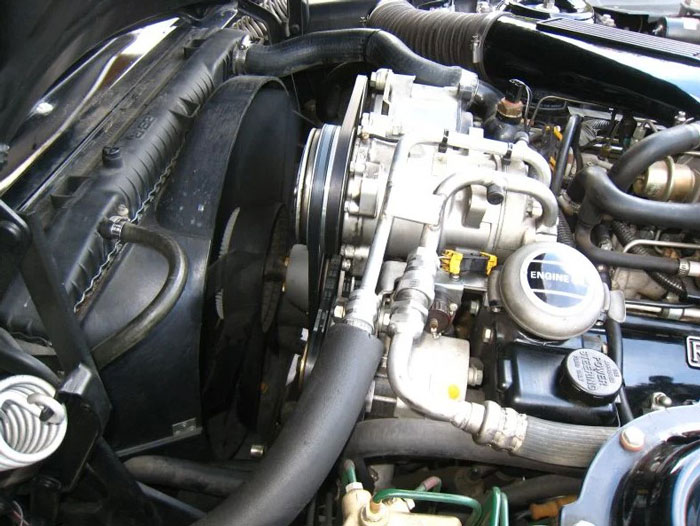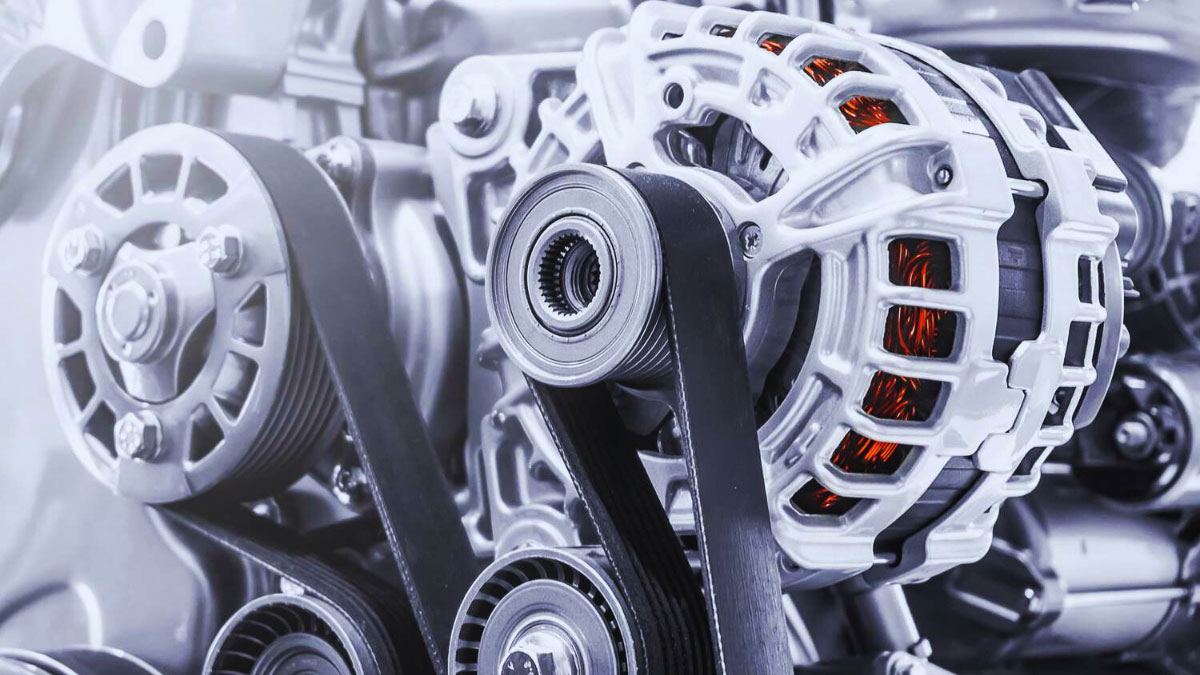Ever wondered what keeps your car’s engine running smoothly? It’s not just about the fuel or the horsepower; the unsung heroes are the various car belts working tirelessly under the hood. From serpentine belts to timing belts each plays a critical role in ensuring your vehicle’s performance and safety.
Understanding these belts and their functions can save you time and money on repairs. Plus you’ll be better equipped to spot potential issues before they become costly problems. Let’s jump into the world of car belts and discover how they keep your engine in tip-top shape.
The Different Types of Car Belts
Car belts are vital for vehicle performance and safety. Knowing the different types, their roles, and potential issues helps car owners keep their engines in top condition.

Timing Belts
Timing belts synchronize the rotation of the crankshaft and camshaft. They ensure that engine valves open and close at precise intervals, coordinating with the pistons. Made from durable rubber with high-tensile fibers, timing belts need regular checks for wear.
- Function: Synchronize camshaft and crankshaft rotation.
- Material: Rubber with high-tensile fibers.
- Maintenance: Replace approximately every 60,000-100,000 miles (manufacturer-dependent).
Serpentine Belts
Serpentine belts, also known as multi-vee or multi-rib belts, drive multiple peripheral devices in the engine. This includes the alternator, power steering pump, and air conditioning compressor. Made from tough rubber materials, these belts are designed to handle high tension.
- Function: Drive multiple engine accessories simultaneously.
- Material: Tough rubber compounds.
- Lifespan: Typically lasts 50,000-100,000 miles (check for cracks or fraying).
Fan Belts
Fan belts, also referred to as V-belts, drive the vehicle’s radiator fan and other components. These belts, which are usually V-shaped, ensure that the engine remains cool by maintaining proper airflow from the fan to the radiator.
- Function: Drive radiator fan and related components.
- Shape: V-shaped design.
- Lifespan: Should be inspected for cracks and tension adjustment regularly.
Accessory Drive Belts
Accessory drive belts power auxiliary components that are not driven by the serpentine belt. These belts manage components such as the water pump in some configurations, fuel injection pump, and occasionally the air conditioning compressor in older models.
- Function: Drive additional engine accessories.
- Material: Rubber or synthetic materials.
- Maintenance: Regularly check for wear and proper tension.
Understanding the roles and maintenance of these car belts ensures optimal vehicle performance and longevity. Regular inspections help identify signs of wear early, preventing potential engine problems.
Functions of Each Belt
Understanding the roles of various car belts can enhance vehicle maintenance and performance. Each belt plays a critical function in the engine’s operation and accessory management.
Timing Belt Functions
The timing belt ensures that the engine’s camshaft and crankshaft rotate in sync. This coordination is vital to maintain the proper timing of the engine’s valves and pistons.
- Camshaft Synchronization: Ensures that the valves open and close at the correct times during the intake and exhaust strokes.
- Crankshaft Synchronization: Keeps the pistons in sync with the camshaft, preventing collision and engine damage.
- Material: Typically made from rubber with high-tensile fibers for durability.
Serpentine Belt Functions
The serpentine belt drives multiple peripheral devices using a single continuous belt, which simplifies the engine design and maintenance.
- Alternator: Powers the vehicle’s electrical systems and charges the battery.
- Power Steering Pump: Supports the power steering system, making it easier to turn the steering wheel.
- Air Conditioning Compressor: Operates the air conditioning system for passenger comfort.
- Water Pump: In some vehicles, drives the water pump to ensure the engine stays cool.
Fan Belt Functions
The fan belt primarily operates the engine’s cooling fan and other components.
- Cooling Fan: Ensures that the engine stays within optimal temperature limits.
- Alternator: In older vehicles, the fan belt may also power the alternator.
- Less Common Components: Sometimes drives auxiliary components like the water pump.
Accessory Drive Belt Functions
The accessory drive belt powers additional components not essential for the vehicle’s primary function but crucial for comfort and performance.
- Air Conditioning: Operates the A/C compressor independently of the serpentine belt.
- Smog Pump: Drives the smog pump to reduce emissions.
- Supercharger: Powers the supercharger, increasing the engine’s efficiency and performance.
Regular maintenance and timely replacement of these belts can prevent engine issues and ensure your vehicle runs smoothly.
Signs of a Failing Belt
Recognizing the signs of a failing belt in your car can prevent costly repairs and ensure your vehicle’s optimal performance. Each type of belt in your car has distinct symptoms indicating potential failure.
Symptoms of a Bad Timing Belt
A bad timing belt can disrupt engine timing, leading to significant issues. Look for these signs:
- Engine Misfires: A worn timing belt can cause the engine to misfire as it slips and the camshaft loses synchronization with the crankshaft.
- Ticking Noises: Listen for a ticking noise from the engine, which can indicate a failing timing belt.
- Oil Leaks: Notice oil leaking from the front of the motor; a bad timing belt cover can cause this.
- Difficulty Starting: Experience trouble starting the car, especially in cold conditions, and suspect the timing belt.
Symptoms of a Bad Serpentine Belt
A failing serpentine belt can affect multiple vehicle components. Look out for these indicators:
- Squealing Sounds: Hear a high-pitched squealing noise when the engine starts, especially during acceleration.
- Power Loss: Experience a sudden loss of power steering, air conditioning, or alternator function, which indicates belt slippage or damage.
- Visible Cracks: Inspect the belt for visible cracks, fraying, or glazing on the belt’s surface.
- Engine Overheating: Notice engine overheating due to a malfunctioning water pump driven by the serpentine belt.
Symptoms of a Bad Fan Belt
A bad fan belt can compromise the cooling system’s efficiency. Watch for these signs:
- Engine Overheating: The engine starts overheating, especially at idle or low speeds.
- Battery Issues: Observe battery discharge problems caused by a non-operational alternator powered by the fan belt.
- Belts Whining: Hear a whining noise from the front of the car as the belt wears out.
- Warped Belt: Examine the belt and notice warping or excessive wear, signaling replacement need.
Symptoms of a Bad Accessory Drive Belt
A failing accessory drive belt affects various auxiliary components. Pay attention to these symptoms:
- Performance Drop: Feel a decrease in performance of accessories like the air conditioning, power steering, or supercharger.
- Noises on Startup: Hear unusual noises such as squeals or chirps when starting the engine.
- Jerky Movements: Notice jerky movements or irregular operation of powered accessories.
Notice these signs promptly and consult a mechanic to avoid further damage.
Maintenance and Replacement Tips
Regular maintenance of your car belts is crucial for vehicle performance and safety. Understanding when to replace each type of belt can prevent unexpected breakdowns and costly repairs.
When to Replace a Timing Belt
Timing belts play a key role in synchronizing the engine’s functions. Ignoring replacement intervals can result in severe engine damage.
- Manufacturer’s Recommendations: Follow the car manufacturer’s replacement intervals, typically every 60,000 to 100,000 miles.
- Visual Inspection: Look for signs of wear, such as cracks, fraying, or glazing. If these are present, replace immediately.
- Engine Performance: If the engine misfires, has a ticking noise, or there’s difficulty starting, consult a mechanic to check the timing belt.
When to Replace a Serpentine Belt
Serpentine belts power several critical engine components like the alternator and power steering pump. Ensuring it’s in good condition keeps your vehicle running smoothly.
- Mileage Check: Replace the serpentine belt every 50,000 to 100,000 miles, depending on the manufacturer’s guidelines.
- Visual Clues: Inspect for visible wear and tear, including cracks, fraying, and stretching. If any are seen, replace the belt.
- Performance Indicators: If you hear a squealing noise, lose power steering, or notice the car overheating, it might be time for a new serpentine belt.
Routine Inspection for Fan Belts
Fan belts (or V-belts) help drive engine components. Regular checks can help you catch issues before they lead to larger problems.
- Inspection Frequency: Check the fan belt every 6 months or at every oil change.
- Physical Examination: Look for signs of wear, including cracks, uneven wear, and fraying. Replace if any damage is found.
- Auditory Cues: Listen for squealing or chirping noises during startup or while driving. These sounds often indicate a worn fan belt.
Maintenance of Accessory Drive Belts
Accessory drive belts power auxiliary systems like the air conditioning and power steering. Keeping them in good condition enhances overall vehicle performance.
- Periodic Checks: Inspect these belts at least once a year or according to the vehicle’s maintenance schedule.
- Wear and Tear: Look for cracks, ridges, or smooth shiny surfaces. Replace the belt if any signs of wear are evident.
- Functionality Tests: If the accessories they power are underperforming, such as weak air conditioning or faulty power steering, the accessory drive belt might need replacement.
Regularly inspecting and maintaining car belts ensures a smooth and safe driving experience. If any signs of wear or failure are noticed, act promptly to replace the belts and consult a professional mechanic for accurate diagnosis and corrective actions.
Conclusion
Maintaining your car belts is crucial for ensuring your vehicle runs smoothly and safely. By understanding the different types of car belts and their specific functions, you can better recognize signs of wear and take timely action. Regular inspections and adhering to manufacturer recommendations for replacements can save you from costly repairs and unexpected breakdowns. Always listen for unusual sounds and visually check for any signs of damage. When in doubt, consult a professional to keep your vehicle in top shape.
Frequently Asked Questions
What are the symptoms of a bad serpentine belt?
Squeaking, squealing, or chirping sounds from under the hood. Dashboard warning lights, such as the check engine or battery light, are illuminated. Malfunctioning A/C and power steering. The engine temperature is high or overheating, and there’s a smell of burnt rubber.
How to tell if a timing belt is bad?
Listen for a ticking noise from the engine. The car’s engine won’t turn over, there’s an oil leak near the motor, you experience exhaust issues, or the engine’s RPMs start acting up.
What are the different belts in a car?
Common belts include the V-belt, power steering belt, air conditioning belt, alternator belt, serpentine belt, and timing belt.
How many types of belts are there?
There are three basic types of power transmission belts: flat belts, V-belts, and synchronous belts. Misalignment often causes premature belt failure.
What is a transmission belt?
Transmission belts in vehicles are used for power transmission between different engine components and accessories. They ensure the effective functioning of systems like the alternator, power steering, and A/C.

